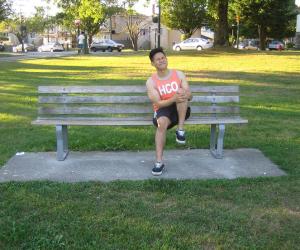When it comes to tendonitis, it basically refers to the irritation, inflammation or tear of a tendon. Take note that the tendons are responsible for connecting the muscles to the bones, transferring movement across a joint that result to movement. Knee tendonitis is considered as one of the common injuries involving the knee and can be triggered by overuse, injury or the aging process.
What are the symptoms?
The distinctive symptoms of knee tendonitis include pain and swelling close to the kneecap. Certain activities such as running, jumping and abrupt changes in the direction only add stress on the patellar tendon. Athletes usually face a higher risk for developing knee tendonitis.

Always bear in mind that pain is the initial indication of tendonitis. It can be achy and dull at the front part of the kneecap. The pain tends to worsen when walking, squatting, climbing stairs, sitting or kneeling for long periods. Take note that knee tendonitis also causes swelling below the knee cap. The tendon sheaths are the tissues that surround the tendon which can become evidently inflamed due to the accumulation of fluid.
Possible causes
In some cases, the kneecap is out of its proper alignment which results to excessive wear and tear on the patellar tendon as well as the surrounding soft tissue, thus resulting to knee tendonitis. Overuse, over-training and increasing the mileage abruptly can lead to knee tendonitis. Other contributing factors include imbalance, weakness, hamstring tightness, repetitive jumping and twisting.
Management of knee tendonitis
The pain triggered by overuse typically responds well to first aid care. Initially, you have to instruct the individual to rest and avoid activities that can aggravate the pain. You have to apply ice on the affected knee frequently at least every hour at 10 minutes for each session. Make sure that you will cover the ice pack in a clean cloth or towel to prevent damage on the skin. After the initial day of injury, the ice must be applied at four times in a day. If you want to learn more about these treatment options, click here.
You should also keep the affected knee elevated in order to minimize the swelling. The knee must be gently compressed using an ace bandage to reduce the swelling as well as provide support.
Consulting a doctor
It is best to seek medical attention if the following are present.
- Could not put any weight on the knee
- Severe knee pain while at rest
- Knee is swollen and discolored
- Buckling of the knee
- Knee clicks when moved
Preventive measures
The individual should steadily increase the level of physical activity to help prevent the recurrence of knee tendonitis. Always observe proper warming up before an exercise routine as well as proper cool down and stretching afterwards.
The gait of the individual should be checked to rule out pronation. As for the shoes being used, they should be replaced regularly depending on the usage. Take note that a replacement is required every six weeks. Additionally, staying in shape as well as losing weight can prevent the condition since extra weight will only add stress on the knee joint.
